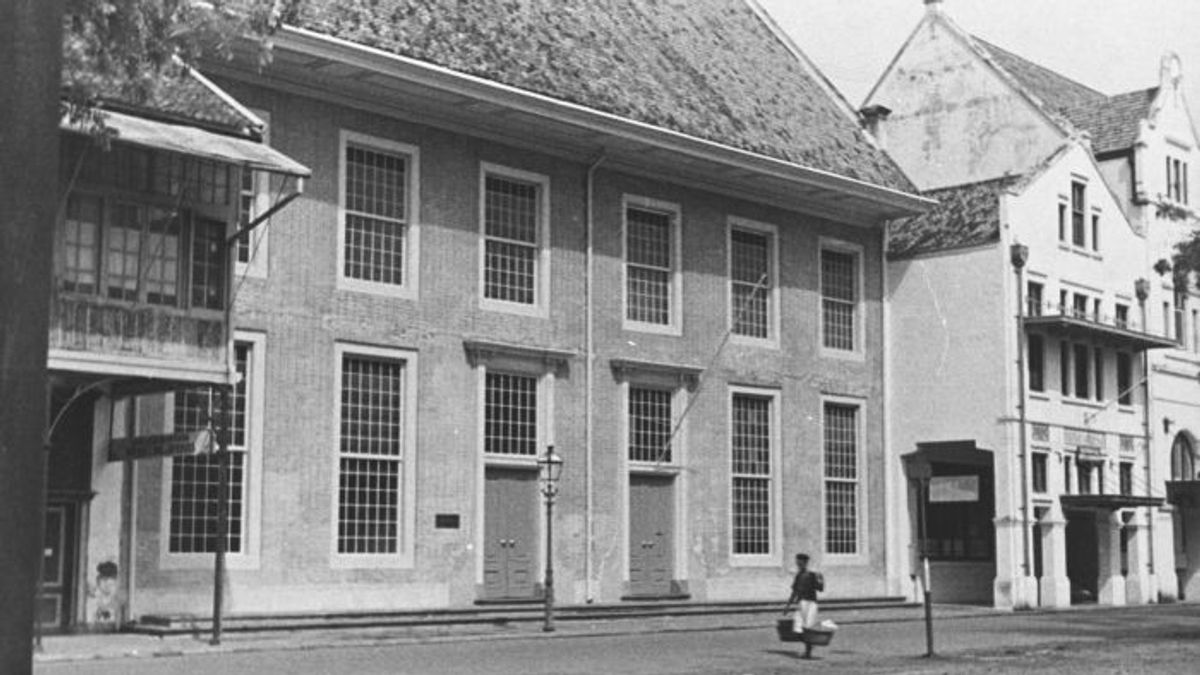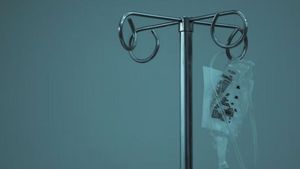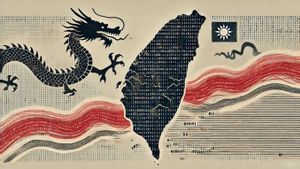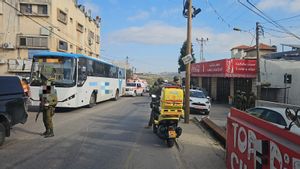JAKARTA - Currently, Rumah Ganda or Toko Merah, located in the Oud Batavia area - Old Town - is like an old building that has been vacated. Many consider the red shop haunted. In the eyes of others, Toko Merah is very exotic. However, not many of them know the history of Toko Merah. Including the massacres that have occurred there.
In fact, if you turn your memory back in the colonial era, Toko Merah has become so famous because its echoes were always discussed by people who had visited Batavia in the 18th century. How could I not, apart from being in an elite area and having architectural beauty, the building which was built on an area of 2,471 square meters also belonged to one of the Batavia celebrities.
According to Thomas B. Ataladjar in his book entitled Toko Merah: Witness to the Glory of Old Batavia at the Edge of the Ciliwung Estuary (2003), Toko Merah is an elite two-story house built in 1730 by a young merchant or Onderkoopman Gustaaf Willem Baron van Imhoff, just before himself became Governor-General of the VOC, who reigned from 1743-1750.
Not only that, Van Imhoff built the house thanks to the legacy of his parents who were famous as the upper class in Amsterdam. Unfortunately, Van Imhoff and his wife occupied the house not for long. Only six years. After that, Toko Merah was sold when Van Imhoff left and became Governor of Sri Lanka.

An eye-witness to the history of Batavia
Interestingly, since the Red Shop first stood firmly near the big river. At the same time, Toko Merah has been a silent witness to many important histories, from the colonial era, Japanese colonialism, to the post-independence era of Indonesia. One of the important histories summarized from the presence of the Red Shop is that it was once a place for slaves from all over the country to be auctioned.
In addition, Senior Journalist Alwi Shahab in his book Maria van Engels: Habib Kwitang's Men-in-law (2006) also reveals various events that have occurred in front of Toko Merah. “At least in front of the building that flows the river Groote Rivier (Kali Besar) there was a big riot when there was a massacre of Chinese people. This incident occurred 10 years after this building was founded (1740). "
It was for this incident that people recognized him with the term "Chinezenmoord", which means "the killing of Chinese people" or better known as "geger pacinan."
GB Schwarzen described the recording of a riot in his book Reise in Oost-Indien (1751). He wrote about his experience of being trapped in the upheaval of the Pacinan which made Chinese people fearful because they were being hunted down by the colonial government. Because, once a Chinese person was seen by VOC soldiers, no matter men, women or children, all of them were immediately killed.
One of the locations of his massacre was right in front of Toko Merah. "In the city hall - the present Jakarta History Museum - there are two hundred prisoners. To save bullets, they were all stabbed to death. On the 13th, all the burning stopped and there was not a single Chinese in the city. All the streets and alleys were full of corpses. , at times heaped up with bodies so that people could cross over the bodies without getting their feet wet. " wrote GB Schwarzen.

Several years after the chaos in the Pacific, Van Imhoff, who had served as Governor General of the VOC, again bought Toko Merah. Not long after, after just a few months of occupying his house again, Toko Merah was again sold to the company to establish the Academie de Marine or the Academy of Sailing.
The establishment of the Shipping Academy was justified, namely that the officers of the commercial ships of the Company could be better educated. Uniquely, apart from being a campus, Toko Merah was also asked as a dormitory for cadets at that time. Thus, it is natural that the Shipping Academy built by the company is the oldest in mainland Asia and the world.
Subject to finance the campus. The Company has prepared a strategy in the form of giving power to the court in terms of preparing sentences for the captains and officials. At the same time, if someone makes a mistake, they have to pay a fine to the campus.
Due to insufficient costs, as Adolf Heuken wrote in the book Historical Places in Jakarta (2007). Adolf revealed that the owner of the policy then racked his brains by issuing a new policy, "which is to collect spectacle tax, for example cockfighting and potehi puppets. Apparently, semi-illegal levies have been practiced in this city for a long time. "
Regarding the evidence of the academy's existence, it can be seen from the three door ventilation holes with carvings of a girl holding anchors, books and pillars that can restore memories to that era. "Unfortunately, the carving of the ventilation holes has been moved to the National Museum (1901) and can now still be seen in Compagnie's Kamer's stockroom," said Adolf.
Over time, Toko Merah had changed ownership several times. Starting to be owned by the widows of the Governor General of the VOC - Mrs De Kler and Mrs Van Der Parra - until finally Rumah Ganda was used as a shop by Oey Liauw Kong in 1890. Since then the name attached to the plenary Double House became Toko Merah.
“Since the 1890s the house has been called Toko Merah, which is when the Oey family used it as a shop. The red brick of the wall was painted red again. However, in a photo from 1927 the walls were (once) plastered with cream color. Meanwhile, the current facade seems to be from renovations in the 1960s, "concluded Adolf.
The English, Chinese, Japanese, Arabic, and French versions are automatically generated by the AI. So there may still be inaccuracies in translating, please always see Indonesian as our main language. (system supported by DigitalSiber.id)













